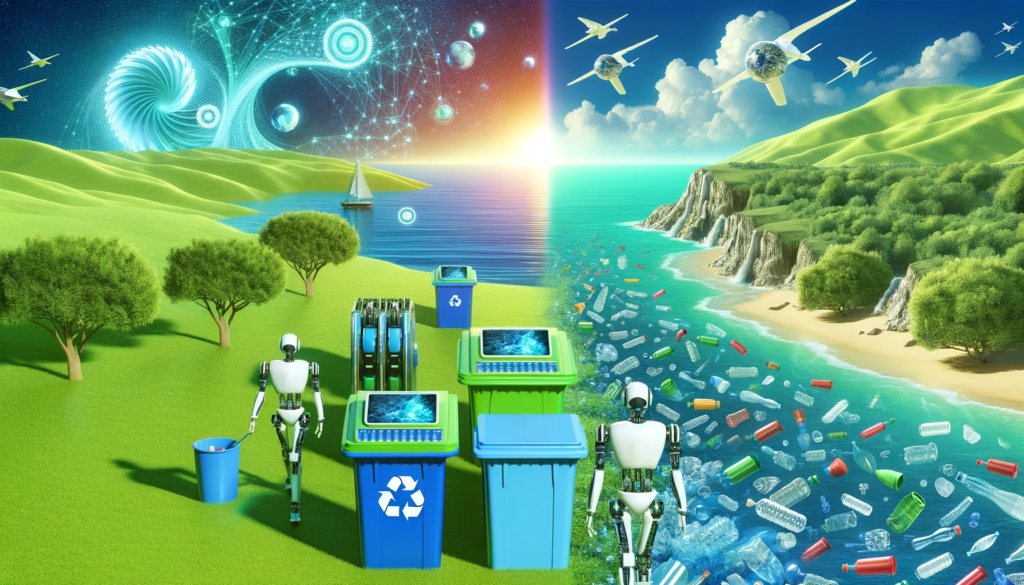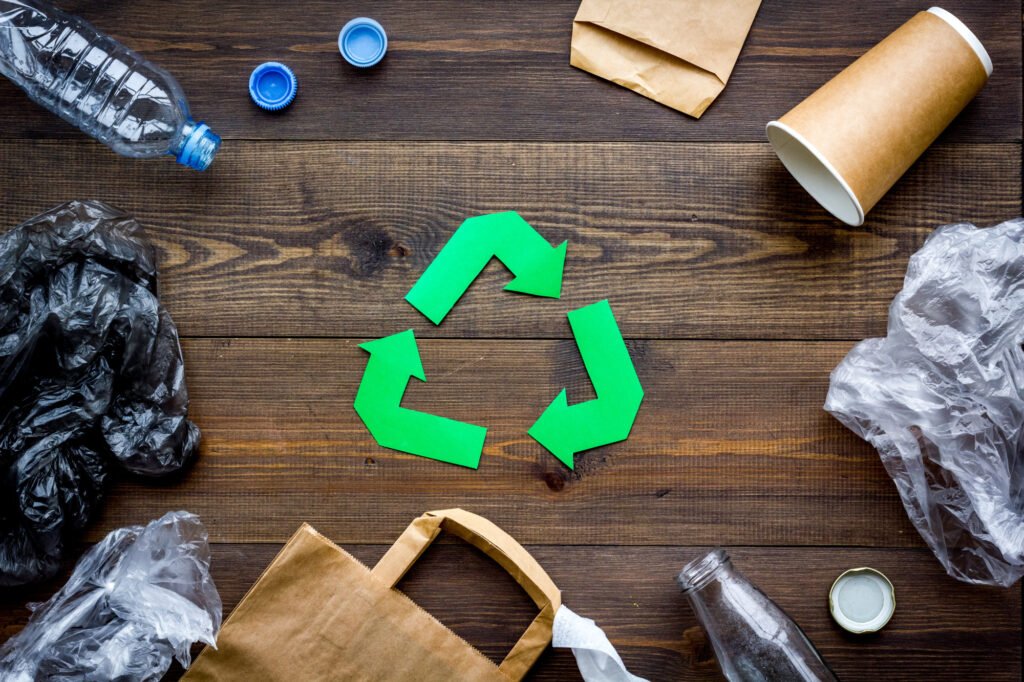Introduction: Why AI and Plastics Matter
Imagine a world where plastic waste didn’t pile up in landfills or float in our oceans. A world where we could use plastic without hurting the environment. Sounds like a dream, right? Well, it might not be just a dream for long. Scientists are using a really smart technology called artificial intelligence (AI) to help solve our plastic problems.
You might be wondering, what does AI have to do with plastic? It turns out, quite a lot! AI is like a super-powered brain that can think and learn on its own. It can help us find new ways to make, use, and recycle plastic that are better for the planet. In this article, we’ll explore how AI is changing the game for plastics and the environment.

Defining the Plastic Problem
First, let’s talk about why plastic waste is such a big deal.
Plastic is Everywhere and It Doesn’t Go Away
We use plastic for so many things – from the toys we play with to the containers we put our food in. The problem is, plastic doesn’t just disappear when we’re done with it. It can take hundreds or even thousands of years to break down. A lot of it ends up in places it shouldn’t, like the ocean or the bellies of animals.
The Growing Plastic Waste Crisis
Every year, we make more and more plastic. But we’re not very good at recycling it or disposing of it safely. Millions of tons of plastic end up in the environment, harming wildlife and even making its way into the food we eat. It’s a big, scary problem that keeps getting worse.
The Core Question: How Can AI Help?
So here’s the big question: how can AI help us tackle this plastic waste crisis?
AI as a Tool for Innovation
AI has the potential to revolutionize the way we approach plastics. It can analyze huge amounts of data to find patterns and come up with new ideas that humans might miss. AI can help us invent new materials, improve recycling processes, and find smarter ways to use and reuse plastic.
AI Across the Plastic Lifecycle
Scientists are exploring how AI can make a difference at every stage of a plastic product’s life. From designing more eco-friendly plastics to sorting waste more efficiently to finding new uses for recycled material, AI is showing promise all along the way.
Previous Research: Early Insights
Let’s take a look at some of the ways researchers have already been using AI to address plastic waste.
AI for Better Plastic Design
One area of focus has been using AI to design new plastics that are easier on the environment. For example, a team at IBM used AI to discover a new type of plastic that’s stronger and more heat-resistant than conventional plastics, but can also be broken down and recycled more easily.
AI for Smarter Recycling
Another key area is improving plastic recycling with AI. Researchers have developed AI systems that can quickly sort different types of plastic based on their chemical makeup. This makes recycling facilities more efficient and effective.
AI for Novel Plastic Applications
AI is also helping find surprising new uses for recycled plastic. One cool example is using plastic waste to 3D print houses! An AI algorithm can figure out how to turn shredded plastic into a sturdy construction material.
Limitations of Current Approaches
While this early research is exciting, there are still some big challenges to overcome.
Scaling Up AI Solutions
A lot of the AI plastic projects so far have been small-scale experiments in labs. It’s not always easy to turn these ideas into real-world solutions that can handle the massive amounts of plastic we use and toss every day. We need to find ways to make these AI innovations work on a much bigger scale.
Integrating AI Into Complex Systems
Plastic production and waste management involve a lot of different people, companies, and processes. Adding AI into the mix isn’t always straightforward. We need to think carefully about how to weave AI into these complex systems in a way that’s practical and beneficial for everyone involved.
Learning From Experiments: Our Research Journey
In our own research, we’ve been exploring some new frontiers for AI and plastics.
Training AI to Spot Microplastics
One of our projects focuses on detecting tiny bits of plastic called microplastics. These are really hard to see and study, but they’re a growing environmental concern. We’ve been training AI models to find and count microplastics in images of water and soil samples. It’s a tricky task, but the AI is getting better and better at it!
Developing Biodegradable Plastics With AI
We’re also using AI to help invent new plastics that can break down naturally in the environment. By analyzing data on different chemical compounds and their properties, our AI algorithms can suggest combinations that could make for good biodegradable plastics. We then test the most promising ideas in the lab.
The “Aha” Moment: When AI Surprised Us
Sometimes, AI comes up with ideas that surprise even the experts.
An Unexpected Recycling Solution
In one of our experiments, we were using AI to find ways to recycle a tricky type of plastic called thermosets. These plastics are really strong and heat-resistant, which makes them hard to melt down and reuse like other plastics. But our AI system suggested something unexpected – grinding the thermosets into a fine powder and mixing them into concrete. We tried it, and it worked! The plastic powder actually made the concrete stronger. It was a solution we never would have thought of on our own.
New Ideas on the Horizon
As we continue to push the boundaries of AI and plastics research, some exciting new possibilities are emerging.
AI-Designed Enzymes for Plastic Digestion
One cool idea is using AI to design special enzymes (a type of protein) that can break down plastic. Enzymes are like tiny biological machines that can perform specific chemical reactions. By analyzing the structure and function of existing enzymes, AI could help us engineer new ones that are really good at decomposing plastic waste.
AI for Plastic-Eating Bacteria
Another frontier is using AI to study and enhance bacteria that can consume plastic. Yes, there are actually some microbes out there that see plastic as a tasty snack! But they’re not always very efficient. With AI, we could identify the genes and conditions that help these bacteria thrive and break down plastic faster. We might even be able to engineer super-powered plastic-munching bacteria with the help of AI.

Conclusion: A Plastic Future Transformed By AI
As we’ve seen, AI is opening up a whole new world of possibilities for tackling plastic waste. From smarter design to better recycling to novel solutions we’ve never even dreamed of, AI is helping us reimagine our relationship with plastic.
It’s an exciting time, but there’s still a lot of work to do. We need to keep pushing the boundaries of what’s possible with AI and plastics. We need to collaborate across different fields and industries to turn these ideas into real-world impact. And we need to keep caring deeply about the planet we all share.
The plastic waste crisis is a big challenge, but with the power of AI on our side, a cleaner, greener future is within reach. One day, plastic might not be a problem anymore, but a resource we can use and reuse in harmony with nature. And that’s a future worth working towards, one smart step at a time.






